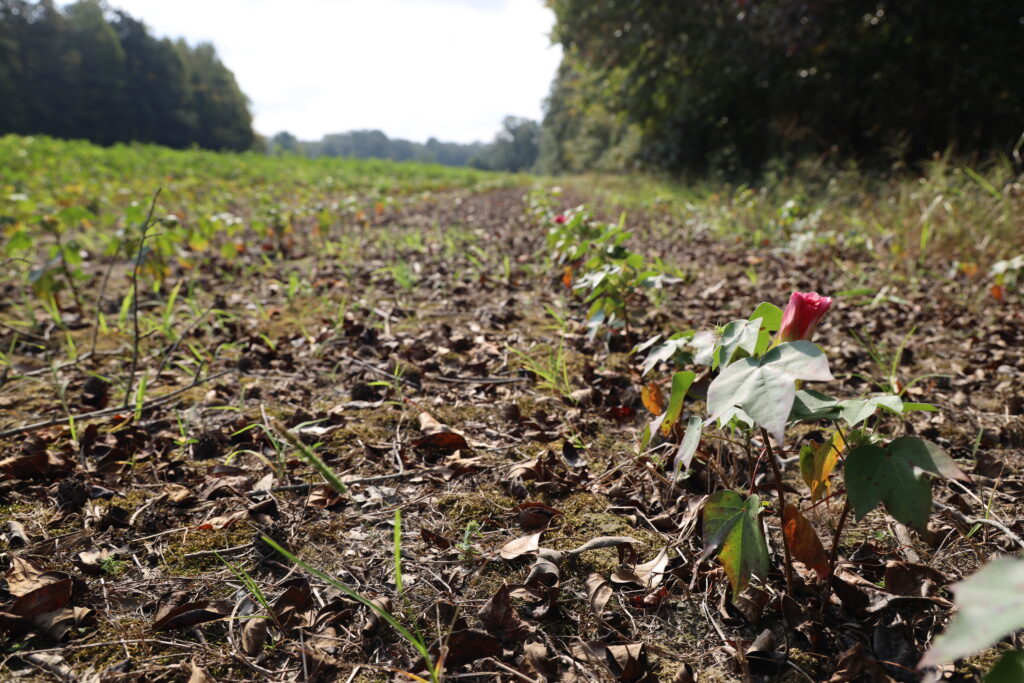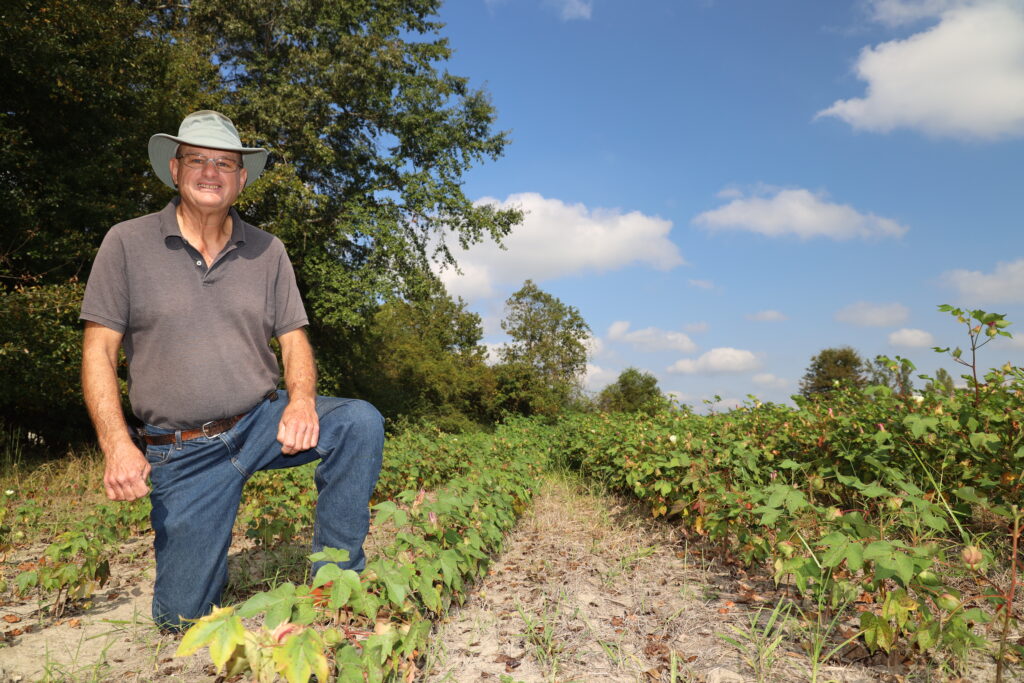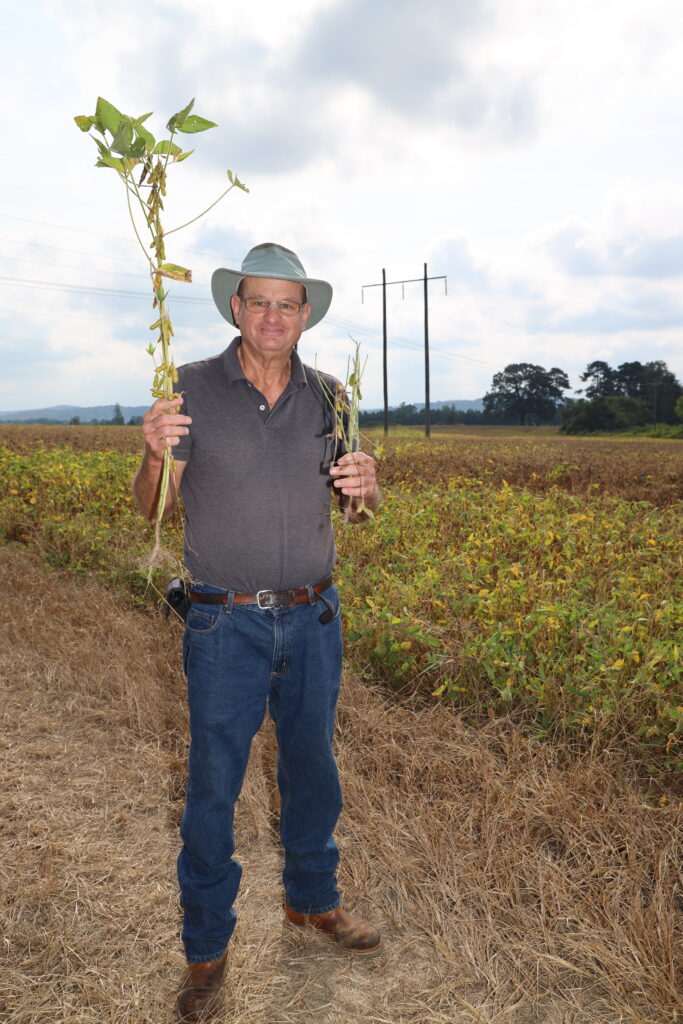In the Bag: Farmers Benefit from Deer Depredation Permits

By Marlee Jackson
Despite bagging 18 does in 2023, Tommy Sewell doesn’t consider himself a hunter.
“I’ve never shot a deer in deer season,” said the Etowah County farmer. “I’ve only shot in summer when they’re eating up my crop.”
His out-of-season shots were thanks to a White-Tailed Deer Depredation Permit. Issued by Alabama’s Department of Conservation and Natural Resources (ADCNR), the permits allow farmers, or their designated agents, to harvest a set number of deer throughout the growing season.
That’s because deer nibble and gnaw corn, cotton, soybeans and more. Tender, just-emerged shoots tempt taste buds, and the all-you-can-eat buffet continues through harvest as plants produce new, albeit stunted, growth.
This was Sewell’s third year using a permit. The annual application begins with a call to an ADCNR District Office, where farmers connect with a technical assistance biologist who then visits their farm to determine the scope of damage.
Biologists often see chomped plants along a tree line or decimated crops in smaller, woods-bordered fields. They can then recommend deer for lethal removal by firearm at night or during the day. If a farmer harvests his quota, the permit could be re-upped.
ADCNR issued 203 permits in 2023, up just 10 from the year before.

It’s a startlingly small number compared to the damage deer inflict on crops, said Bill Cook.
Cook owns land in game-heavy Wilcox County. He also chaired the recent Alabama Farmers Federation Deer Population Study Committee, a 12-person group organized to target practical solutions in the farmer-deer fight. This includes programs with targeted uses for venison meat, as current regulations prohibit processing deer taken under depredation permits.
“This permit is something we need to embrace,” said Cook, who serves on the Federation state board. “It’s not being used as much as it could and should.”
Part of the permit’s pull is allotting designated hunters. In Etowah County, Sewell’s brother, two sons, a grandson and a landlord could hunt under his permit June 2 to Sept. 30 — during Alabama’s sweltering summer when mosquitoes and snakes can squash the allure of hunting.
Despite challenges, they bagged 18 out of 20 permitted deer. Minimizing munching is key as farmers consider abandoning acres because harvest costs aren’t worth the yield.
“You might not cover expenses on the ground they eat,” said Sewell, who has seen as many as 20 deer in a small cotton field near his home in Southside. “We didn’t stop them, but we did slow them down.”

In addition to White-Tailed Deer Depredation Permits, landowners can reduce their herd through the October-February traditional hunting season and Alabama’s robust bag limit, said ADCNR Outreach Specialist Marianne Gauldin. ADCNR’s Deer Management Assistance Program is an option, too.
“Landowners should take advantage of the fact that the regular deer season allows for taking one unantlered deer per day per hunter on their property on dates open to either sex harvest,” Gauldin said. “This means a potential harvest of over 100 antlerless deer for each hunter, without a depredation permit.”
Just 6% of licensed hunters harvested more than five deer last year. That’s out of 160,000 resident hunters and 20,000 out-of-state licensees, said the Federation’s William Green.
“This is a complex issue, and there’s not an easy fix,” said Green, who leads the Federation’s Wildlife Division and helped coordinate the Deer Population Study Committee. “We need to remove more does from the landscape. The easiest way is using hunters.”
To learn more about White-Tailed Deer Depredation Permits, contact an ADCNR District Office at outdooralabama.com/wildlife-section.
